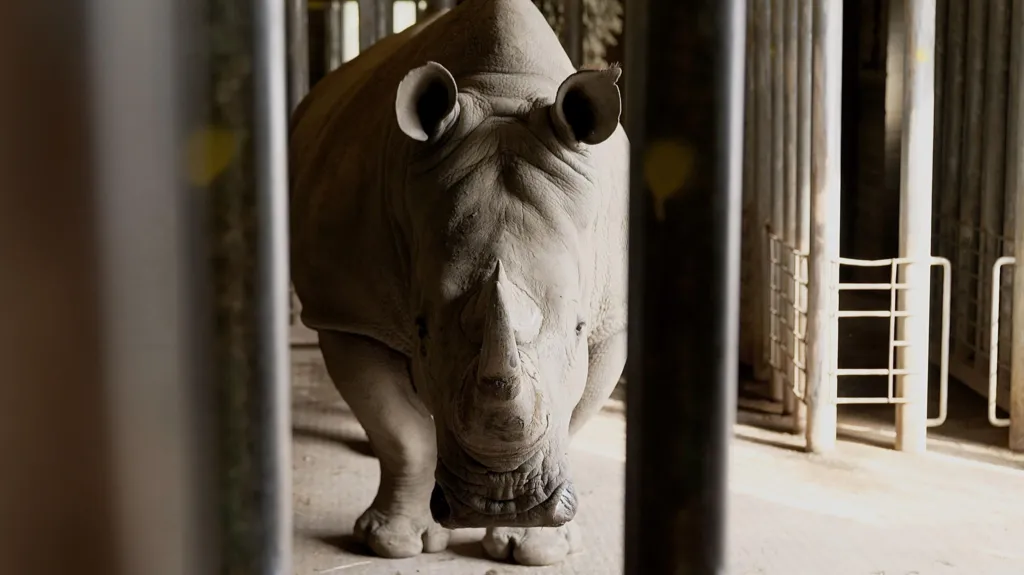Collecting eggs from a two-tonne rhino is no small feat, yet zoos across Europe are undertaking this challenging task to support the wild rhino population. The goal is to use advanced fertility technology to enhance the genetic diversity of southern white rhinos in Africa.
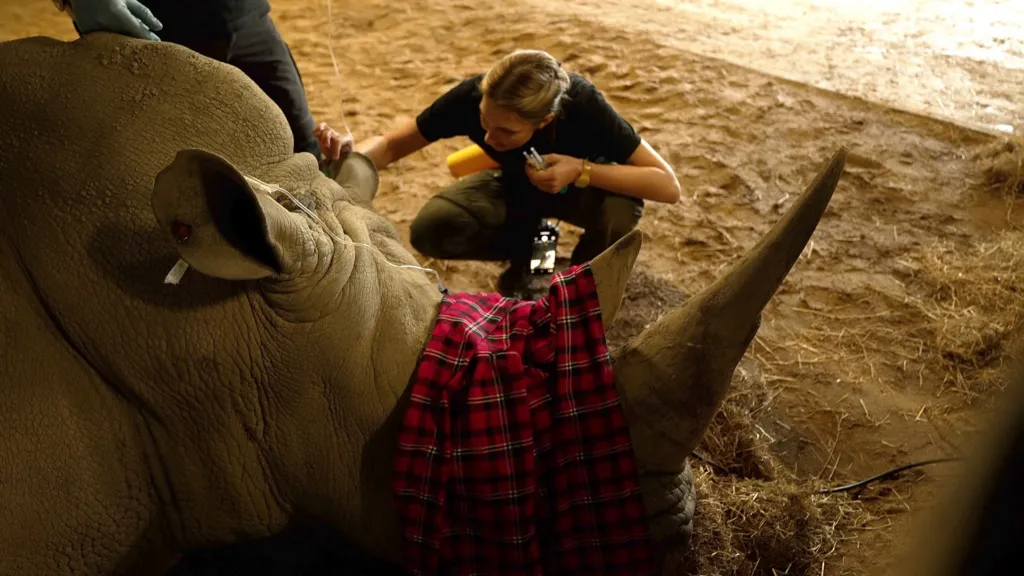
This species was once on the brink of extinction, with their numbers dwindling to just a few dozen, meaning all existing southern white rhinos are descended from this small group. Scientists suggest that zoo-based rhinos, which benefit from more genetic diversity through careful crossbreeding, could expand the gene pool via IVF. This technology has recently seen a significant breakthrough: in January, researchers announced the world’s first successful rhino IVF pregnancy.
One of the key participants in the southern white rhino zoo project is Zanta, a 22-year-old rhino from Dublin Zoo in Ireland. “Zanta has exceptional genetics that we want to preserve, but previous reproductive assessments have shown that she cannot breed naturally,” explains Frank O’Sullivan, a veterinarian at the zoo. “Our primary goal with this procedure is to circumvent her reproductive issues, harvest her eggs, and fertilize them. The best part is that Zanta’s genetics will contribute to future generations of rhinos.”
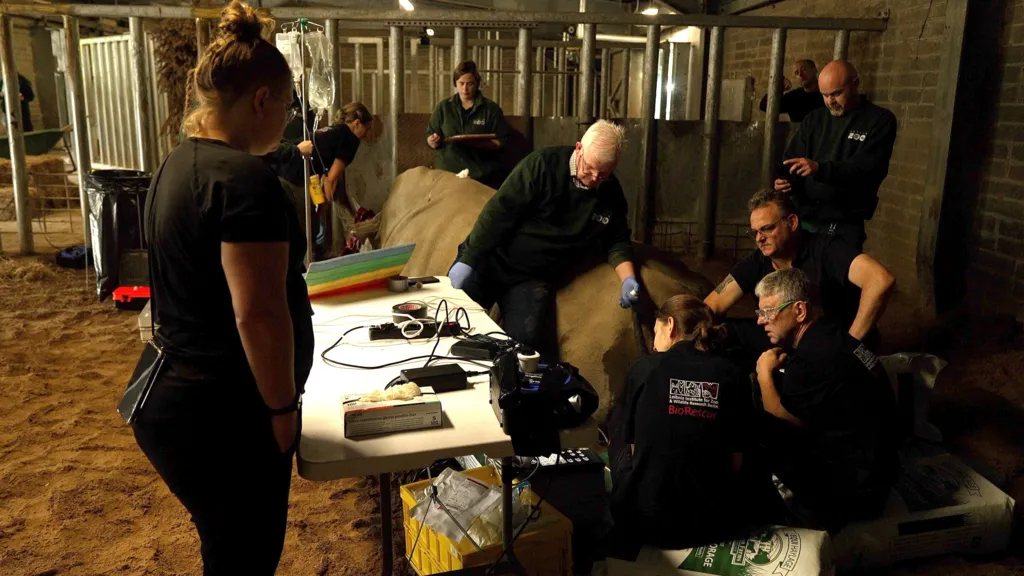
A team of fertility specialists from the Leibniz Institute for Zoo and Wildlife Research in Germany has traveled to Ireland to perform the procedure. Zanta is anaesthetized with a dart, and once fully sedated, the scientists begin their work. Amidst the rhythmic beeping of equipment monitoring Zanta’s vital signs, researchers huddle around a screen displaying an ultrasound of the rhino’s ovaries. She has received special hormone injections to stimulate egg production. The researchers locate the eggs within follicles, which appear as black circles on the screen, and use an ultra-fine needle and meticulous precision to extract them.
Developing this technology has been a lengthy process. The IVF pregnancy announced in January was a significant milestone, as the team successfully transferred a lab-created rhino embryo into a surrogate southern white rhino mother. Unfortunately, the calf was never born because the surrogate mother died from an unrelated bacterial infection early in the pregnancy. However, the scientists view this as proof of the technique’s viability.
Their ultimate goal is to apply this method to the nearly extinct northern white rhino, for a project called Biorescue. Only two northern white rhinos remain on the planet, both females. The scientists believe that the reproductive advancements they have achieved could also address the genetic challenges facing the southern white rhino.
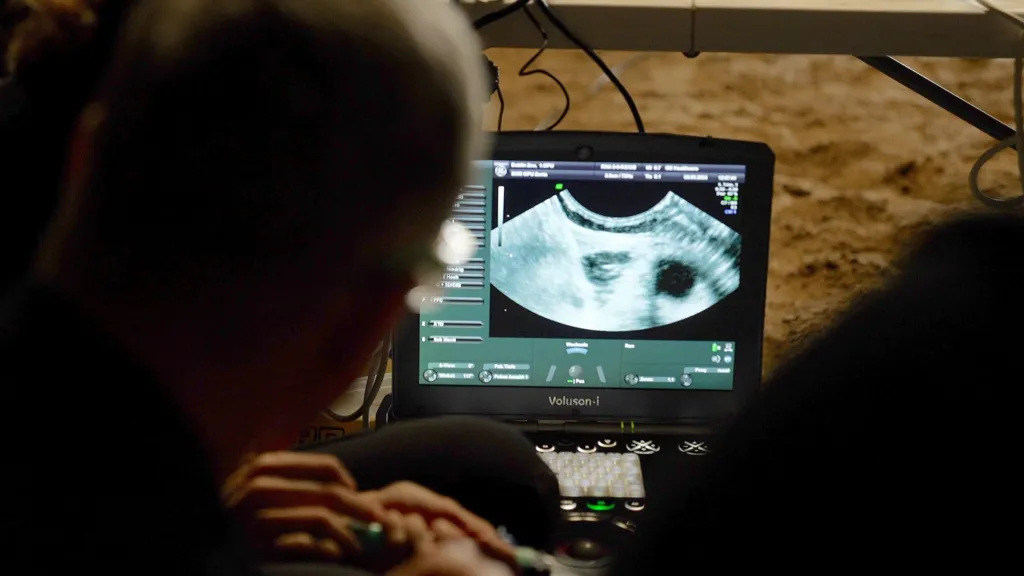
Today, the population of southern white rhinos numbers in the thousands, but this wasn’t always the case. At the end of the 19th century, the species was nearly driven to extinction due to hunting and land clearance, with estimates suggesting there were as few as 20 individuals left. Over time, the population has slowly recovered, and they are now classified as near threatened. However, originating from such a small group has resulted in a lack of genetic diversity, which poses significant risks.
“If you have a very narrow gene pool, a virus, for example, can spread rapidly because each individual has a similar immune response,” explains Prof. Thomas Hildebrandt, director of reproduction at Leibniz IZW. In contrast, southern white rhinos in zoos exhibit more genetic diversity due to carefully managed breeding programs.
“We’re aiming to utilize this new technology to preserve Zanta’s genes and reintroduce them into the wild population in Africa, thereby enhancing the gene pool for future generations,” he says.
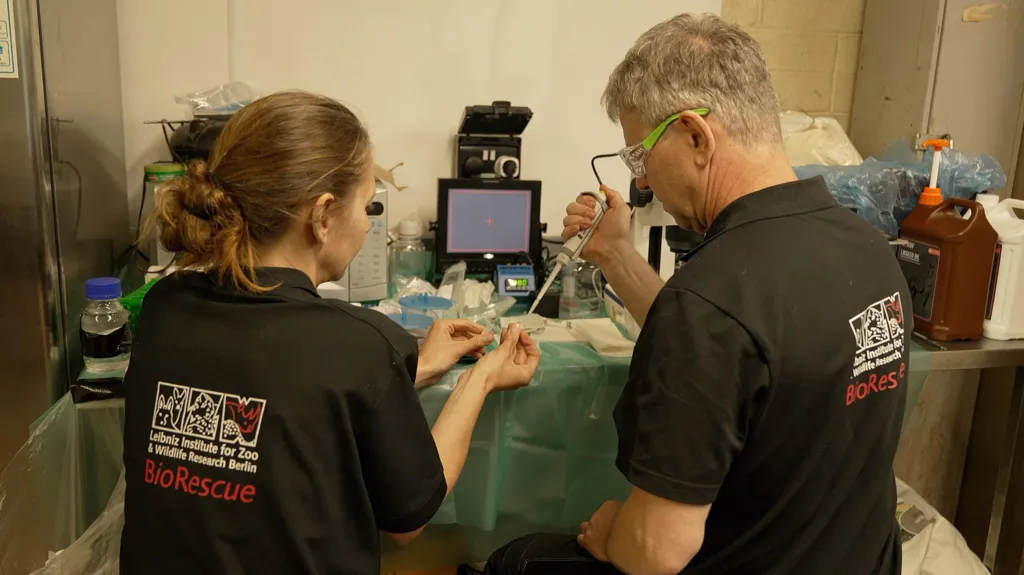
In a makeshift lab beside the rhino enclosure, scientists carefully examine their collected samples under a microscope. Susanne Holtze, a member of the Leibniz team, reports that they have successfully harvested four eggs. Rhino IVF remains in its early stages, with no calves yet born from the technique. However, the team is diligently creating a repository of embryos using eggs and sperm collected from across Europe, with the goal of eventually implanting them into surrogate mothers.
“It’s a lot of effort, and in the end, we come home with just a few cells. But these cells have the potential to become embryos and eventually form a new rhino – a massive two-tonne animal, so it’s worth it,” says Dr. Holtze.
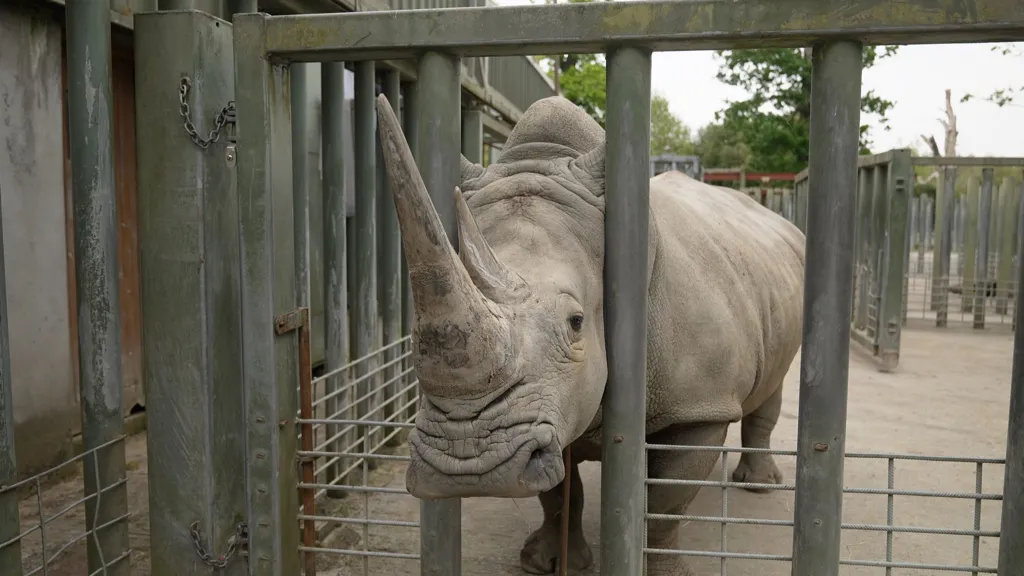
Back in the enclosure, shortly after the procedure is completed, Zanta begins to wake up. She appears a bit unsteady on her feet at first, but once everyone is confident in her recovery, she heads outside. Her keeper calls her name, and she soon ambles over for a gentle scratch behind her ears. Although Zanta is unaware, the few eggs she has donated could significantly impact the survival of future generations of southern white rhinos.
